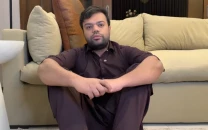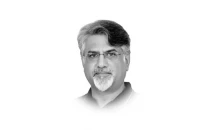Child marriage dispute
.

When the law of the land and a religious ruling are in conflict with each other, ambiguity and confusion prevail - with real-world consequences. The recent Lahore High Court judgment, which validated the marriage of a 15-year-old girl on the grounds that she had attained puberty, is a case in point. While the girl told the court she had married by choice, her father alleged otherwise, and the initial police investigation treated her as being in the unlawful custody of another family. What appears to be choice in the courtroom may, in reality, reflect constrained options or coercion.
This case exposes a recurring blind spot in Pakistan's legal landscape. Punjab's Child Marriage Restraint Act sets the minimum age at 16 for females, yet the court found the union valid under Islamic law. In a society where patriarchal pressures and family influence are pervasive, the line between choice and force is often blurred.
The contradictions extend beyond Punjab. Sindh and Islamabad have raised the legal marriage age to 18 for both genders, while other provinces continue under the colonial-era framework that does not void underage unions. This patchwork of laws weakens enforcement, leaving vulnerable children exposed to practices that can be justified under one interpretation but criminalised under another.
The Council of Islamic Ideology has a critical role to play in bridging this divide. They must intervene to help reconcile these contradictions, along with other social theorists and human rights experts. Without alignment between statutory provisions and religious interpretation, courts will remain caught between conflicting standards, and the risk of coercion will persist. Until then, the most vulnerable - particularly young girls - will bear the costs of uncertainty, trapped in marriages whose legitimacy depends less on their consent than on which legal lens is applied.














COMMENTS
Comments are moderated and generally will be posted if they are on-topic and not abusive.
For more information, please see our Comments FAQ